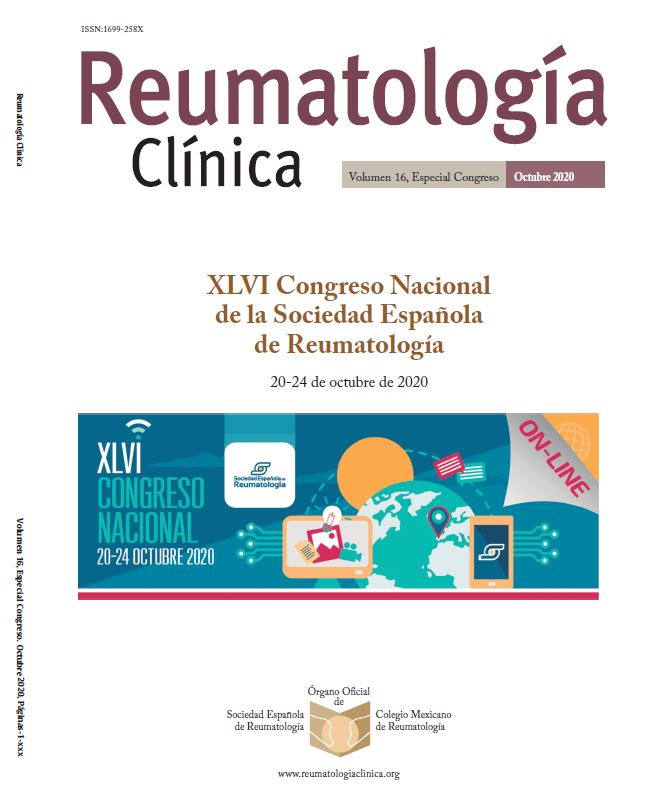P217 - Disease activity measures and other potential predictors of successful TNF inhibitors tapering in RA patients
Departamento de Reumatología. Hospital La Paz. Madrid.
Introduction: Biologic therapy (BT) resulted in a substantial improvement of outcomes in rheumatoid arthritis (RA). However, it is also associated with higher costs, adverse events and patient´s request to dose reduction and drug holidays. Although clinical practice guidelines suggest consider tapering biologics after sustained remission, the optimal approach for de-escalation remains unknown.
Objectives: i) to identify potential features associated with long-term successful TNF inhibitors (TNFi) tapering (Tap) in RA patients (pts), including the possible predictive value of different disease activity measures (DAS28, SDAI, CDAI). ii) to describe long-term outcome in relation to dose reduction of BT.
Methods: Observational prospective study of 91 RA pts who started a first TNFi between 2000-2014 and in whom tapering (dose down-titrated or interval widen) was applied as per clinical practice protocol after achieving sustained remission/Low disease activity. Demographic, clinical and analytical data were collected at biologic initiation. Disease activity was measured using DAS28, SDAI and CDAI at de-escalation start and at 6 (6 m), 12 (12 m), 18 (18 m) and 24 months (24 m) follow-up. Tap failure (primary outcome) was defined as reinstatement of full dose, escalation to the previous dose level or discontinuation due to secondary inefficacy. Tap status (Tap failure/success) was also assessed at each studied time point. Mann-Whitney U test and Fisher’s exact test were used to test statistical differences. Logistic regression analysis was used to identify predictors of tap failure at 12 and 24 m. Multivariate models were adjusted for those variables with a significant association in the univariable analysis and those identified as predictors in the literature (concomitant sDMARD, duration of remission and disease activity before tap, rheumatoid factor status and smoking habit).
Results: Of the 91 cases included (mean age 53 ± 12.5 years, 74% women), eleven (12%) experienced Tap failure at the 12 m mark. At 24 m, 18 pts (20%) failed to taper, while 74 (80%) succeeded. At 12 and 24 m no significant differences were found in baseline and pre-Tap characteristics between those who experienced tap failure and those who succeeded (Table). In the univariate analysis, at the 12 m mark, there were no factors related to tapering; however, at 24 m, a longer time from TNFi start to achievement of remission was identified as a predictor of Tap failure (OR = 1.64, 95%CI 1.1-2.5, p = 0.02); this feature remained associated with failed Tap at 24 m in the multivariate analysis (OR = 1.75, 95%CI 1.1-2.8, p = 0.02). Neither of the three disease activity indices (DAS28, SDAI and CDAI at Tap initiation) predicted long-term tap failure.
|
Baseline characteristics |
Pts who presented a tap failure at 24 m (n = 18) |
Pts who presented a successful tap at 24 m (n = 73) |
Total population (n = 91) |
p |
|
Age at TNFi start (years) |
48.4 (13.2) |
54 (12.1) |
53 (12.5) |
p = 0.067 |
|
Sex (female), n (%) |
13 (72) |
54 (74) |
67 (74) |
p = 1.000 |
|
Non smokers, n (%) |
7 (41) |
41 (58) |
48 (54) |
p = 0.281 |
|
BMI, m (SD) |
25.3 (4.8) |
25.5 (4.2) |
25.5 (4.3) |
p = 0.756 |
|
RF +, n (%) |
15 (83) |
59 (81) |
74 (81) |
p = 1.000 |
|
CCP, + n (%) |
13 (72) |
58 (82) |
71 (80) |
p = 0.511 |
|
Monotherapy, n (%) |
3 (17) |
8 (11) |
11 (12) |
p = 0.450 |
|
Methotrexate, n (%) |
13 (72) |
54 (74) |
67 (74) |
p = 1.000 |
|
Disease duration, m (SD) |
8.8 (6.6) |
10.2 (7.1) |
9.9 (7) |
p = 0.367 |
|
DAS28 at TNFi start, m (SD) |
4.7 (1.3) |
4.7 (1.1) |
4.7 (1.2) |
p = 0.717 |
|
CDAI at TNFi start, m (SD) |
25.2 (23.5) |
22.5 (12.3) |
23.1 (15.1) |
p = 0.640 |
|
SDAI at TNFi start, m (SD) |
23.4 (13.7) |
22.1 (12.4) |
22.3 (12.6) |
p = 0.939 |
|
Pre-Tap Characteristics |
||||
|
DAS28 at Tap initiation, m (SD) |
2.3 (0.7) |
2.4 (0.7) |
2.4 (0.7) |
p = 0.834 |
|
CDAI at Tap initiation, m (SD) |
3.6 (3) |
3.5 (4.2) |
3.5 (4) |
p = 0.474 |
|
SDAI at Tap initiation, m (SD) |
4.4 (3) |
3.8 (4.2) |
3.9 (3.9) |
p = 0.171 |
|
Time from TNFi start to achievement of remission |
1.9 (1.6) |
1.1 (1) |
1.3 (1.2) |
p = 0.087 |
|
Time from achievement of remission to tapering |
2.2 (2.5) |
2.5 (2.6) |
2.4 (2.5) |
p = 0.465 |
|
M: mean; SD: standard deviation. |
||||
Conclusions: In our cohort of RA patients on tapered TNFi, time from TNFi start to achievement of remission seemed to determine successful tapering of biological treatment. However, disease activity scores measured at dose reduction initiation were not predictive of successful de-escalation strategies.







